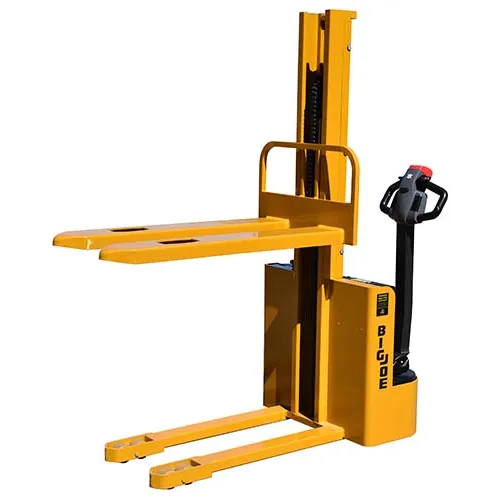Cutting Downtime in Romania: How Pallet Changing Machines Help
Are you losing valuable production time because of a simple broken pallet? It’s a common problem. A single damaged pallet can stop an entire production line. This halt leads to missed deadlines and rising costs. I’ve seen this happen too many times in busy factories. A client in Romania was facing this exact issue. Their logistics team was manually transferring heavy goods from broken pallets. This process was slow, unsafe, and a major source of unexpected downtime. They needed a solution that was fast, reliable, and could handle their demanding workload.
Pallet changing machines help cut downtime by providing a fast, automated, and safe way to replace damaged pallets or transfer loads to different pallet types. Instead of manual handling that can take 30 minutes or more per pallet and risks injury or product damage, a pallet changer can complete the task in under a minute. This efficiency eliminates a major bottleneck in logistics and warehousing, keeping production lines moving and ensuring goods are always on compliant, high-quality pallets.
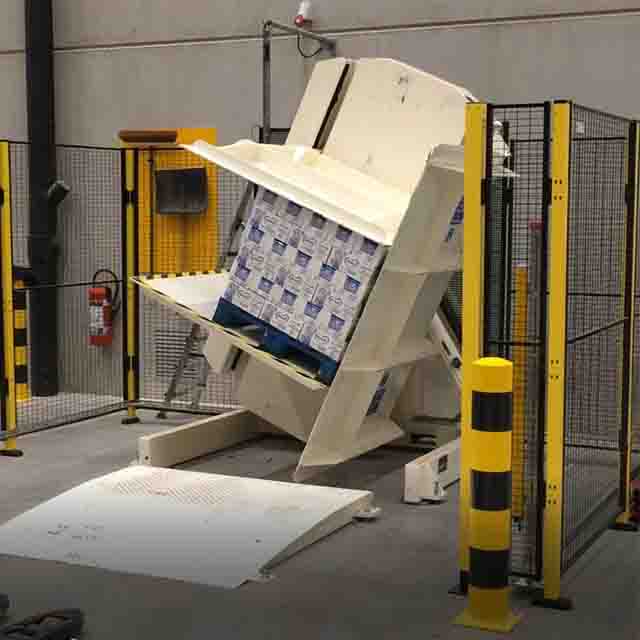
I know from my years as an engineer that small problems often cause the biggest headaches. A broken pallet seems minor, but the ripple effects are huge. This is especially true in high-capacity operations like steel mills, where every minute of uptime is critical. You have invested in massive machinery and complex systems. It's frustrating when a cheap wooden pallet brings everything to a standstill. In this article, I want to share my experience. We will look at how these simple machines can solve this complex problem. We'll explore how to choose the right one for your specific needs, what to expect in terms of real-world performance, and how they fit into a modern, digital factory. Let's dig in.
What is a pallet changer and how does it reduce downtime?
Your team spots a cracked pallet coming off the production line. The standard procedure is to stop the line, call over several workers, and manually move heavy products one by one to a new pallet. This is slow and dangerous. Workers can get injured. Products can get damaged. All the while, your expensive machinery sits idle, and your production schedule falls behind. It’s a costly interruption caused by a simple piece of wood.
A pallet changer, also known as a pallet inverter, solves this by mechanizing the entire process. It securely clamps the entire load, rotates it, and allows the old or damaged pallet to be easily removed from the top. A new pallet is placed, and the machine rotates the load back to its original position. This reduces a 30-minute manual task to a 60-second automated one, directly minimizing downtime and keeping your operations flowing smoothly.
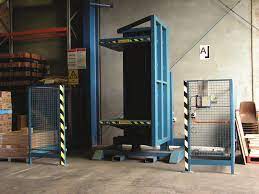
Diving Deeper into Operational Efficiency
When I talk to clients like Javier, a steel mill owner, their primary concern is always uptime. His goal of 95% equipment effective running time is ambitious but achievable. The key is to eliminate unplanned stops. Pallet issues are a classic example of an unplanned stop that is often overlooked in big strategic plans.
Let’s break down the impact. A steel mill running at 2 million tons per year has an immense output per hour. Any stoppage is incredibly expensive. Manual pallet handling isn't just slow; it's unpredictable. It can take 15 minutes one time, but 45 minutes the next if the load is awkward or products are damaged. This unpredictability makes smart scheduling, another of Javier's goals, very difficult.
A pallet changer introduces predictability.
| Metric | Manual Pallet Change | Automated Pallet Change | Impact on Operations |
|---|---|---|---|
| Time per Pallet | 15-45 minutes | < 1 minute | Drastically increases throughput. |
| Labor Required | 2-4 workers | 1 operator | Frees up labor for value-added tasks. Reduces labor costs. |
| Risk of Injury | High (lifting, bending) | Very Low | Improves workplace safety, lowers insurance premiums. |
| Risk of Product Damage | Moderate to High | Very Low | Reduces waste and protects profit margins. |
| Process Consistency | Low | High | Enables reliable planning and scheduling (MES integration). |
A pallet changer does more than just swap pallets. It becomes a strategic tool. For instance, many companies need to switch from internal wooden pallets to plastic or aluminum pallets for export or cleanroom environments. A pallet changer makes this a seamless part of the workflow, not a logistical nightmare. It also helps with quality control. You can easily inspect the bottom layers of a load for damage without unstacking everything. In an industry like steel, where product integrity is paramount, this is a significant benefit. By turning a variable, manual process into a fixed, automated one, you directly support goals like higher产能利用率 and reduced operational costs.
How do you choose the right pallet changer for a heavy-duty environment like a steel mill?
You run a steel mill, not a grocery warehouse. Your loads are heavy, often irregularly shaped, and the environment is demanding. You know that a standard, off-the-shelf machine might not survive. Buying the wrong equipment leads to more downtime, not less. It creates a new point of failure, wastes capital, and sets back your production goals. You need a machine that is as tough as the products you make.
To choose the right pallet changer for a heavy-duty environment, you must focus on three key areas: load capacity and construction, clamping system, and duty cycle. The machine must be rated for at least 25% above your maximum load weight. Look for a robust frame made of heavy-gauge steel, with reinforced components. The clamping system needs to be powerful enough to hold heavy, unstable loads securely, often using hydraulics with adjustable pressure to avoid damaging the product. Finally, ensure the machine is designed for a high duty cycle to handle the continuous operation common in a steel mill.
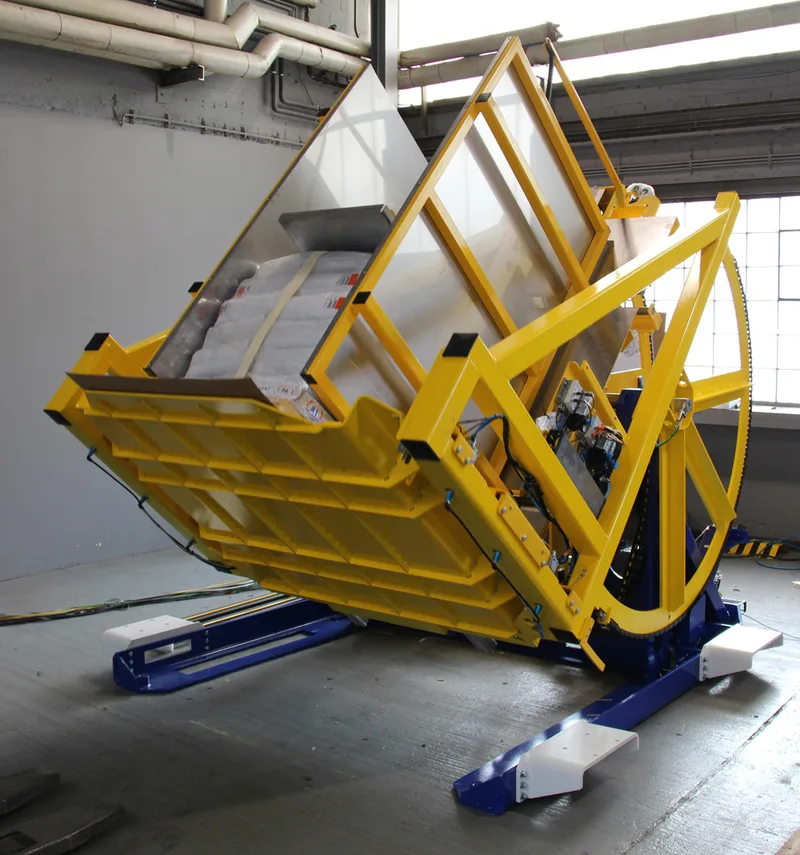
Diving Deeper into Machine Selection
Selecting the right machine is a critical decision. For someone with a mechanical engineering background like Javier, the technical specifications are paramount. He understands that a poor choice here will have long-term consequences. A machine that fails under the stress of a 24/7 steel mill operation will undermine his goal of increasing uptime to 95%. Let’s look at the critical factors in more detail.
Key Specifications for Heavy-Duty Use
-
Load Capacity and Build Quality: Standard pallet changers might handle 1000 kg to 1500 kg. In a steel mill, you might be dealing with coils, plates, or wire bundles that weigh 2000 kg or more. You need a machine with a certified safe working load well above your heaviest product. The frame should be constructed from thick structural steel, not bent sheet metal. All welds must be high quality. I always advise clients to check the weight of the machine itself. A heavier machine often means a more robust build.
-
Clamping Mechanism: This is perhaps the most critical part. For stable, boxed goods, a simple pressure plate is fine. For steel coils or stacked components, this is not enough. You need a system with adjustable hydraulic pressure. This allows the operator to apply enough force to secure the load without crushing or marking the product. Some advanced systems use dual-side clamps that apply pressure more evenly, which is ideal for less stable loads.
-
Rotation and Drive System: The motor and gearbox that drive the rotation must be oversized for the application. A system that is constantly working at its maximum limit will fail prematurely. Look for motors with a high duty-cycle rating and proven gearboxes from reputable brands. A variable speed drive (VSD) is also a huge advantage. It allows for soft starts and stops, reducing mechanical stress on the machine and preventing the load from shifting during rotation.
Here is a comparison of different types of pallet changers for a heavy-duty setting:
| Machine Type | Description | Pros for Steel Mills | Cons for Steel Mills |
|---|---|---|---|
| 180° Inverter | Clamps the load, rotates it 180 degrees. | Handles very heavy loads, very secure clamping. | Requires more floor space, can be slower. |
| Pallet Exchanger (Push-Pull) | Pushes the load from one pallet to another at floor level. | Fast, can be integrated into conveyor lines easily. | May not be suitable for unstable or very heavy loads. |
| Floor-Level Loader | Tilts the load back to allow pallet access at ground level. | Good for limited overhead space, easy pallet access. | Clamping might be less secure for tall, unstable loads. |
For most of the steel industry clients I've worked with, the 180° inverter is the most common choice. Its robust design and secure clamping provide the stability and safety needed for heavy, high-value products. It directly addresses the challenge of aging equipment by being a reliable, long-lasting solution.
You see the sticker price of a pallet changer and you start calculating the return on investment. But the initial purchase price is just one part of the equation. Many leaders overlook the hidden costs: installation complexity, operator training, maintenance requirements, and energy consumption. If you don't account for these, your projected ROI can be misleading. You could end up with a machine that costs more to run and maintain than the downtime it saves, directly conflicting with your goal of an 8% reduction in operating costs.
The true cost of a pallet changer includes the purchase price plus installation, training, maintenance, and spare parts over its lifetime. To calculate an accurate ROI, you must compare this total cost of ownership against the savings from reduced downtime, lower labor costs, fewer product damages, and improved safety. For a steel mill, where downtime can cost thousands of dollars per hour, the payback period for a reliable machine is often less than 12 months. The key is to choose a machine with low energy consumption and easy maintenance to maximize that return.
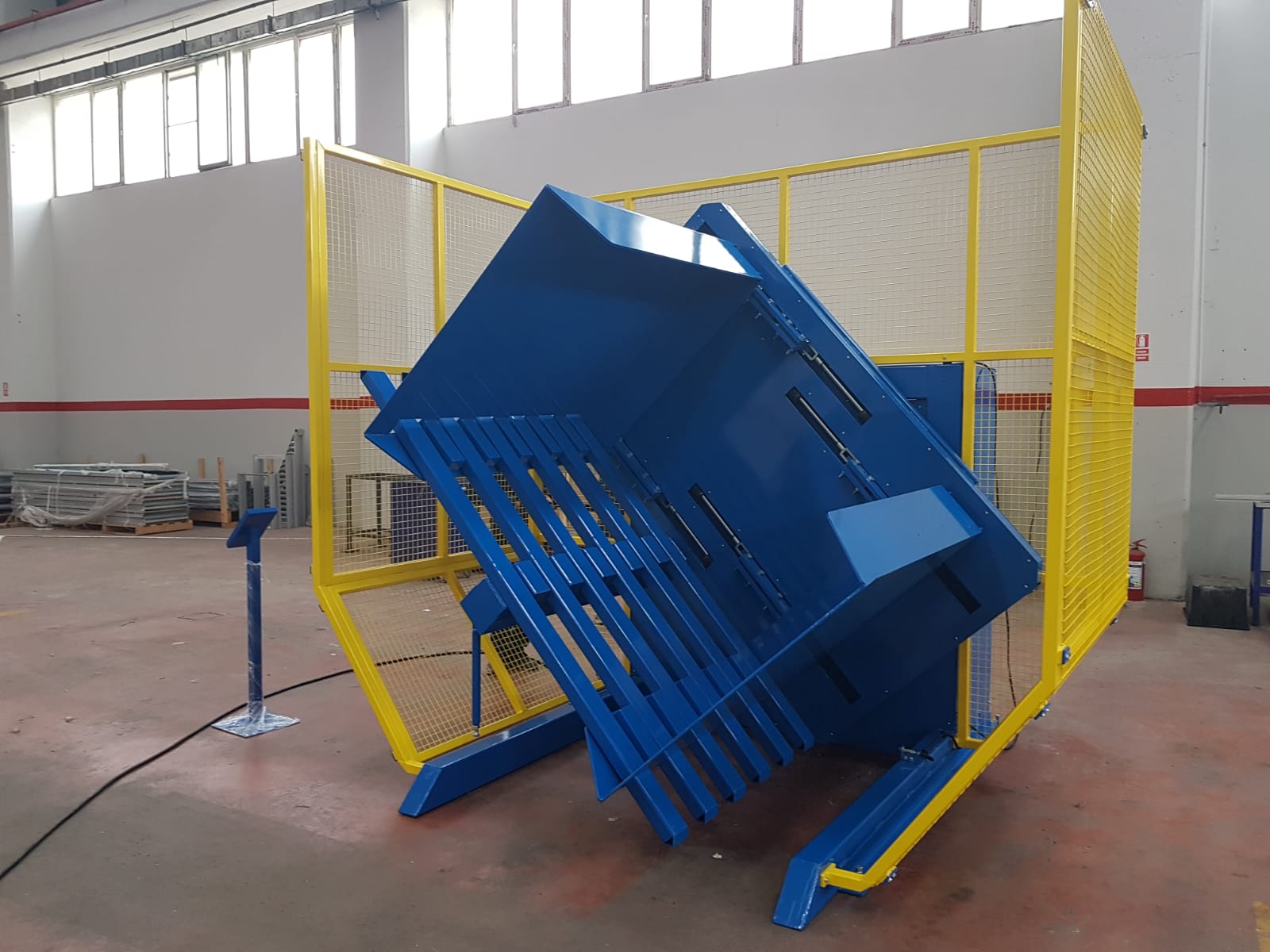
Diving Deeper into Financial Analysis
A business owner like Javier is laser-focused on ROI. Every investment must be justified with a strict feasibility analysis. He knows the steel industry's cyclical nature means that capital must be deployed wisely. His challenge with volatile energy costs also means that the operational cost of any new equipment is a major concern.
Let’s create a more detailed breakdown of the Total Cost of Ownership (TCO) and the potential returns.
Total Cost of Ownership (TCO) Breakdown
| Cost Component | Description | What to Look For |
|---|---|---|
| Purchase Price | The initial capital outlay for the machine. | Varies by type, capacity, and features. Don't just pick the cheapest. |
| Installation & Commissioning | Costs for site preparation, electrical work, and setup by technicians. | A simple machine may be plug-and-play. A complex one may need foundation work. |
| Training | Cost to train operators and maintenance staff. | A good supplier provides this. Poor training leads to misuse and breakdowns. |
| Energy Consumption | The electricity or hydraulic fluid needed to run the machine. | Look for efficient motors and hydraulic systems. This directly impacts your goal to cut energy use by 10%. |
| Maintenance & Spares | Regular servicing, wear-and-tear parts (e.g., hydraulic hoses, bearings). | Ask the supplier for a recommended spare parts list and maintenance schedule. A well-built machine needs fewer parts. |
Calculating the Return on Investment (ROI)
To calculate the ROI, we need to quantify the savings. Let's use a hypothetical example for a steel mill.
-
Downtime Savings:
- Assume 5 pallet-related stops per week.
- Manual change time: 30 minutes/stop. Total: 2.5 hours/week of downtime.
- Machine change time: 2 minutes/stop. Total: 10 minutes/week.
- Time Saved: 2 hours 20 minutes per week. If the cost of downtime is $5,000/hour, that’s a saving of over $11,600 per week.
-
Labor Savings:
- Manual change: 3 workers. Machine: 1 operator.
- Saves the time of 2 workers during each change. This labor can be reallocated to more productive tasks.
-
Product Damage Reduction:
- If you lose even one pallet of high-value product per month due to manual handling, that could be thousands of dollars. An automated system can reduce this to nearly zero.
-
Safety Improvement:
- This is harder to quantify but is very real. Avoiding one serious back injury saves tens of thousands of dollars in medical costs, lost time, and potential legal fees.
When you add all these savings up, the financial case becomes very strong. The machine doesn't just solve a logistical problem; it becomes a tool for achieving a core business goal: reducing overall operating costs and boosting the bottom line.
How can pallet changers integrate with modern digital factory systems?
You are actively pushing for a digital transformation in your factory. You want to deploy MES, IoT sensors, and data analytics to get a complete, real-time view of your production. A standalone machine that doesn't talk to your other systems is a dead end. It becomes an "island of automation" that creates data silos. This makes it impossible to achieve your goal of comprehensive production visualization and makes it harder to manage your entire operation efficiently.
Modern pallet changers can be fully integrated with digital factory systems like MES and WMS. They can be equipped with sensors and communication modules (like OPC-UA or Profinet) that feed real-time data into your central platform. This data includes cycle times, machine status, fault codes, and the number of pallets changed. This integration allows the pallet changer to become an intelligent node in your smart factory, providing valuable data for predictive maintenance, performance tracking, and automated scheduling.
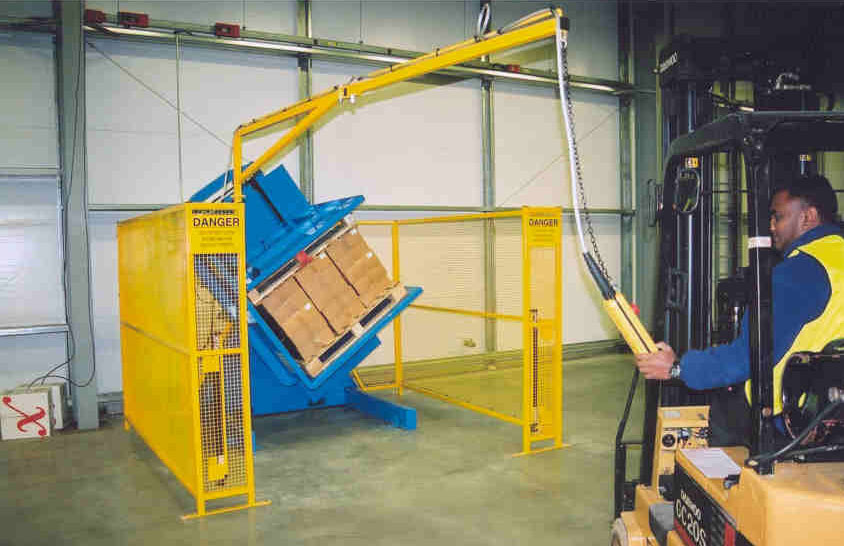
Diving Deeper into Digital Integration
For a forward-thinking leader like Javier, digital transformation isn't just a buzzword. It's a strategic weapon to fight market volatility and cost pressures. He wants to deploy MES and IoT to achieve 95% uptime and full visualization. A pallet changer must fit into this vision.
Here’s how we make that happen at SHJLPACK. We see our machines not just as mechanical devices, but as data sources.
Connecting to the MES (Manufacturing Execution System)
The MES is the brain of the factory floor. It manages work orders and tracks production in real-time. An integrated pallet changer can:
- Receive automated commands: The MES can tell the pallet changer that a specific load (identified by a barcode or RFID scan) needs its pallet swapped before moving to the next stage (e.g., shipping).
- Report back its status: Once the task is complete, the machine reports back to the MES. This automatically updates the product status in the system, providing perfect traceability. There is no need for manual data entry, which eliminates errors.
Leveraging IoT for Predictive Maintenance
This directly addresses Javier's goal of using predictive maintenance. We can embed various IoT sensors into the pallet changer:
- Vibration sensors on the motor can detect bearing wear before it leads to a catastrophic failure.
- Temperature sensors on the hydraulic power pack can alert you if the oil is overheating, preventing damage.
- Cycle counters track the total number of operations, allowing maintenance to be scheduled based on actual usage, not just a fixed calendar.
This data flows to your central analytics platform. The platform's algorithms can then analyze trends and predict a potential failure days or weeks in advance. This allows you to schedule maintenance during a planned shutdown, turning an unplanned stop into a planned one and helping you hit that 95% uptime target.
| Integration Point | Data Provided | Benefit |
|---|---|---|
| PLC Communication Module | Machine status, error codes, cycle count | Real-time tracking in MES/SCADA |
| Barcode/RFID Scanner | Pallet/Product ID | Automated task assignment, full traceability |
| IoT Vibration/Temp Sensors | Machine health data | Enables predictive maintenance, prevents failures |
| Integration with AGVs | "Ready for pickup" signals | Creates a fully automated logistics flow from production to warehouse |
By integrating the pallet changer into your digital ecosystem, it stops being a simple machine. It becomes a valuable part of your data-driven manufacturing strategy. It helps you see the complete picture, make smarter decisions, and achieve the control and efficiency you need to compete.
My Insights
I remember working with a client in Romania who ran a large distribution center for a major retailer. Their situation was very similar to the challenges many heavy industry owners face. They were struggling with aging processes, not just aging equipment. Their method for dealing with damaged pallets was entirely manual. It was a constant source of bottlenecks, and their operations manager told me it was his number one cause of shipping delays. They were skeptical that one machine could make a big difference.
They saw us, SHJLPACK, as just another supplier. But my philosophy has always been different. I didn't start my career as a factory owner. I was an engineer on the factory floor. I've seen firsthand how a small, recurring problem can cripple an entire operation. So, when I talked to them, I didn't just try to sell them a pallet inverter. I asked them to walk me through their entire process. We mapped out the flow of goods from receiving to shipping. We timed the manual pallet-swapping process. We calculated the real cost of their downtime, including the overtime pay for workers who had to stay late to catch up.
We didn't just provide a machine. We provided a solution. We helped them select a 180-degree inverter because of the instability of their mixed-load pallets. We worked with their team to redesign the layout of their staging area to create a smooth, efficient flow to and from the machine. We trained their operators not just on how to use it, but on how to perform daily checks to keep it running smoothly.
The result was transformative. They cut their pallet-related downtime to almost zero. Shipping delays went down by 30% in the first quarter. But the biggest change was in their mindset. They stopped seeing pallet management as a problem and started seeing it as a streamlined part of their operation. They realized we weren't just a vendor; we were a partner who understood their business. This is the core of what we do at SHJLPACK. We share our knowledge to help you succeed. Because your success is our success.
Conclusion
Ultimately, a pallet changing machine is more than just equipment. It is a strategic tool to reduce downtime, cut costs, improve safety, and support your factory's digital transformation goals.

